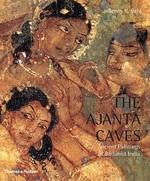
Book Summary
In 1819, a group of British soldiers on a hunting expedition chanced upon the Ajanta caves some 200 miles north east of Bombay. Ranging in date from the second century BC the sixth century AD, the exquisite Buddhist paintings and sculptures found there new rank among the world's most important cultural treasures. The murals were created using only the glow of lamps and candles quite unlike the harsh light employed in modern professional photography. For this book, Benoy K. Behl has used long exposures that pick up natural ambient light, capturing the art for the first time in all its glory and luminosity. The early followers of the Buddha created an isolated haven where they could meditate in peace. Stonecutters carved out massive caves decorated with lithe and graceful figures, fashioning beams and rafters from the rock in imitation of wooden buildings. Painters worked on exquisite murals that depict scenes of princely processions, ladies with their handmaidens, bejeweled animals, ascetics in monasteries, fantastic birds and beasts all demonstrating a startling degree of sophistication. Ajanta provides virtually the only evidence remaining of painting styles that first developed in India and then traveled with the spread of Buddhism into the Himalayan region, across Central Asia into China, and from there to Japan and Korea.
Book Details
| Book Name | The Ajanta Caves: Ancient Paintings Of Buddhist India |
| Author | Benoy K. Behl, Benoy K. Behl, Milo Cleveland Beach |
| Publisher | Thames & Hudson (May 2005) |
| ISBN | 9780500285015 |
| Pages | 256 |
| Language | English |
| Price | 1575 |








